
Why Is Customer Service Important For Dropshipping Stores?
It doesn’t matter if you have the most innovative online store on the market with the highest quality products - without providing excellent customer service, you won’t attract or retain customers.
Customer service includes any time you interact with your customers, whether during daily transactions or when problem-solving. A positive customer experience is one of the easiest ways to reduce customer acquisition costs, increase brand awareness and develop a loyal customer base. It’s also a key differentiating factor between you and your competitors. Conversely, experiencing poor customer service can tarnish your brand reputation and lose you a lifetime customer - or several, if they share their bad experience online.
The global supply chain was heavily disrupted by the COVID-19 pandemic, with disruptions nearly tripling from 2019 to 2021 (Shopify Commerce Trends Report 2023). Even though businesses are feeling the squeeze, customer expectations have not lessened. Their expectations are getting higher, thanks to platforms such as Amazon, which offer fast and free shipping. In 2021, almost 90 per cent of leaders reported that customer service demands were at an all-time high (Hubspot Annual State of Service Report 2022).
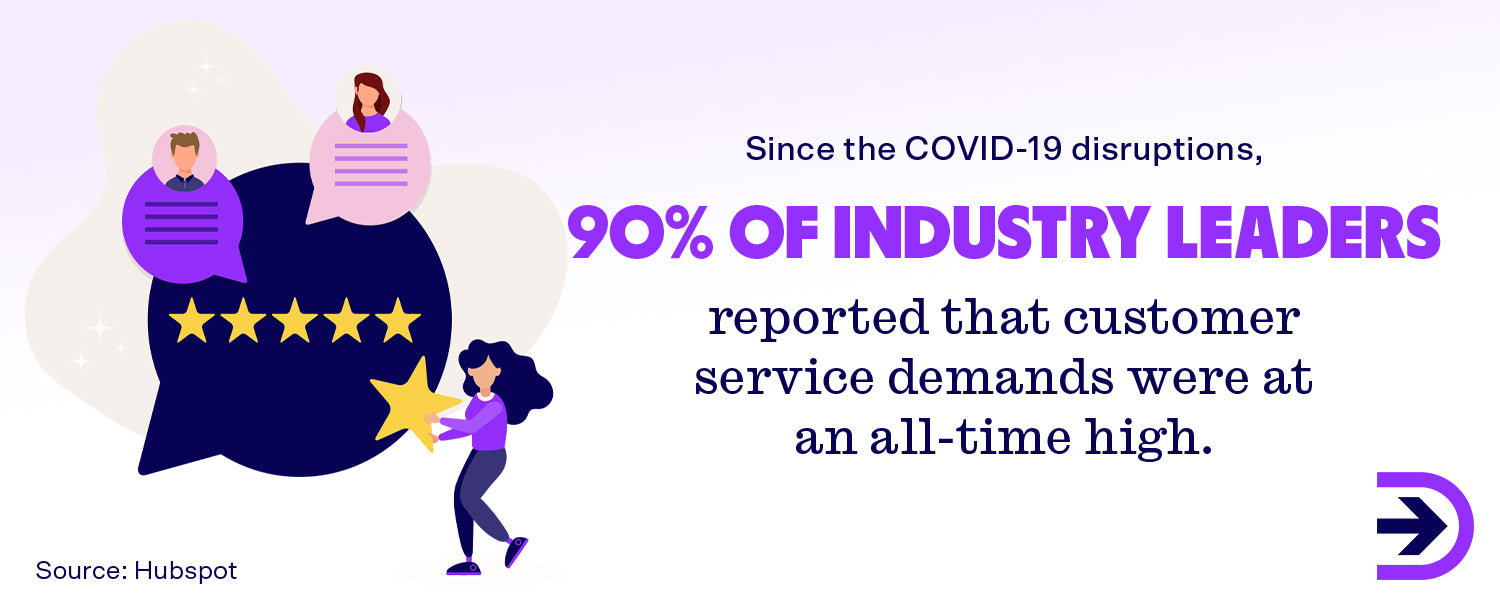
For a successful dropshipping business, offering premium customer service to your customers is a must. While dropshipping continues to be one of the most popular and thriving business models online, it has a mixed reputation, especially when it comes to shipping times. Many beginners will source their products from overseas (such as through Aliexpress), which can save businesses money but leave customers waiting weeks or months to receive their products. Using overseas suppliers also carries a higher risk of mistakes across the supply chain, affecting everything from delivery to returns. The lack of local connections with suppliers will also make problem-solving difficult, whether due to time differences or language barriers. This results in a poor shopping and support experience and negative feedback for many dropshipping businesses. But this doesn’t have to be the case. By providing exceptional customer service, you’ll stand out even in a saturated market and attract more loyal customers.
Impact of poor customer experience
It only takes one bad customer service experience for you to lose 6-20 customers.
According to research by CPM Australia:
-
89 per cent of consumers stopped purchasing from at least one company after a bad customer service experience in 2022.
-
34 per cent of customers expect a first-contact resolution and may stop purchasing from a company without it.
-
Only 47 per cent of customers are willing to give companies a second chance after a poor experience.
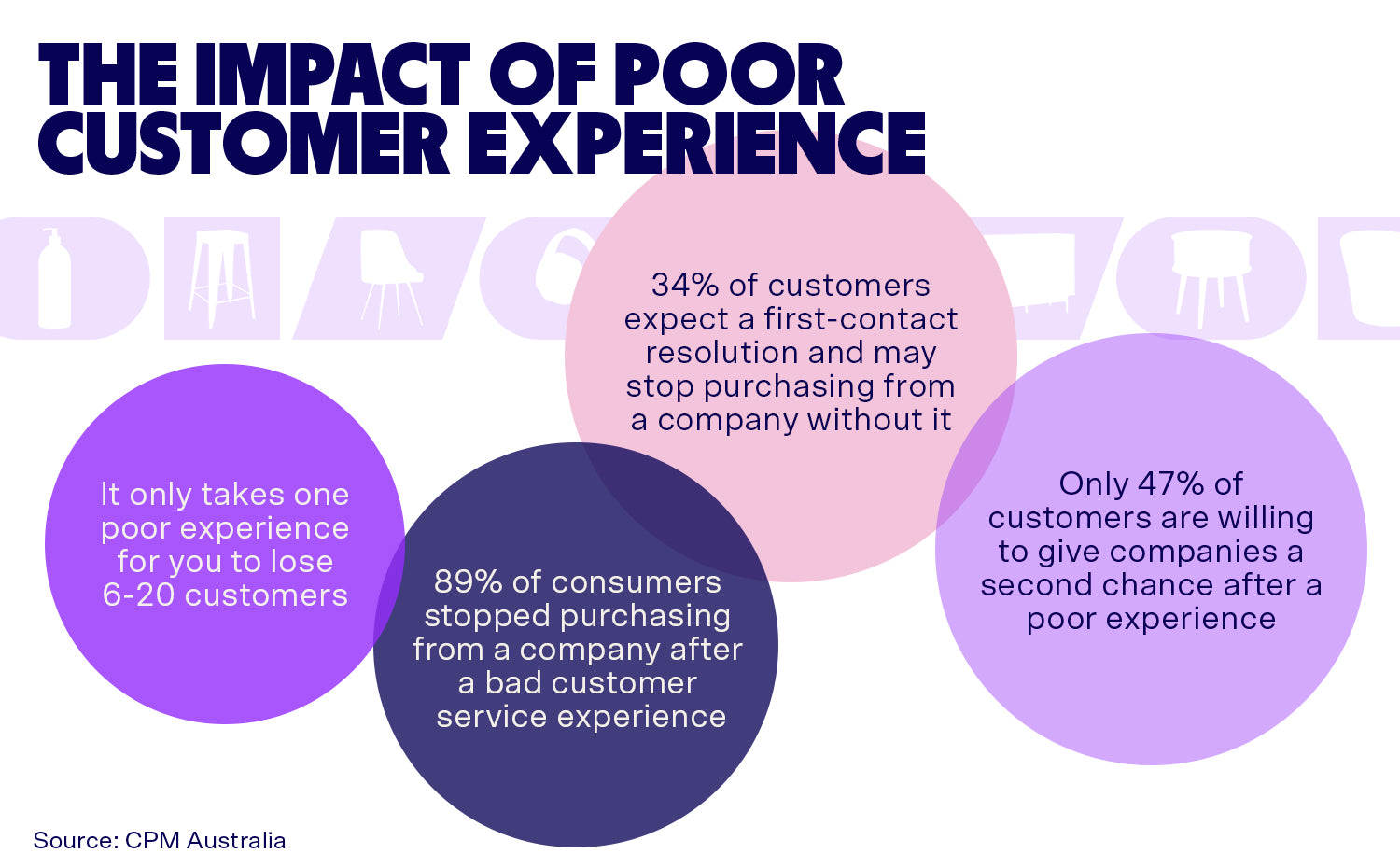
As you can see, a bad experience can almost guarantee customer loss. But what about when they share their experience with others?
According to the same study, 80 per cent of consumers share their customer experience with others. In 2022, 84 per cent of customers shared a negative experience, with 25 per cent sharing their negative experience with six or more people. Conversely, only 74 per cent of consumers shared a positive experience, and only 9 per cent shared their experiences with six or more people. While only a small percentage shared their experiences with 20 or more people, the sharing of negative experiences occurred four times more frequently in this category. This is a concerning figure when you consider that 95 per cent of prospective customers read online reviews before buying a product, and 49 per cent say they trust online reviews as much as personal recommendations.
As you can see, a single bad experience can have a domino effect on your reputation. But a bad review is preventable. We’ve compiled these simple tips to help you improve your customer service operations, develop a positive brand reputation, and build a loyal fanbase.
How to improve your store’s customer service
Did you know that one-third of customers believe that companies place no, low or moderate value on customer service, despite companies investing in the customer service process more than ever before? There is some dissonance between what businesses consider excellent customer service, and what customers want. By understanding this difference, you can turn your ecommerce business into a 5-star experience that keeps customers loyal.
Listening to the customer
Once, we didn’t have a lot of outlets to share good customer service experiences. You might have talked to your friends and family, sent letters or made phone calls. Nowadays, you can instantly share your experiences over social media, and customers have taken to these channels loudly. 90 per cent of social media users follow at least one brand, which could explain why 97 per cent of Fortune 500 companies and 77 per cent of small businesses use social media accounts to connect to customers. Meeting your customers where they are is an important aspect of receiving feedback and listening to pain points. Platforms have even made it easy for you to find relevant content: all you need to do is type in relevant hashtags and you’ll see plenty of user-generated content related to your company, competitors, or similar products.
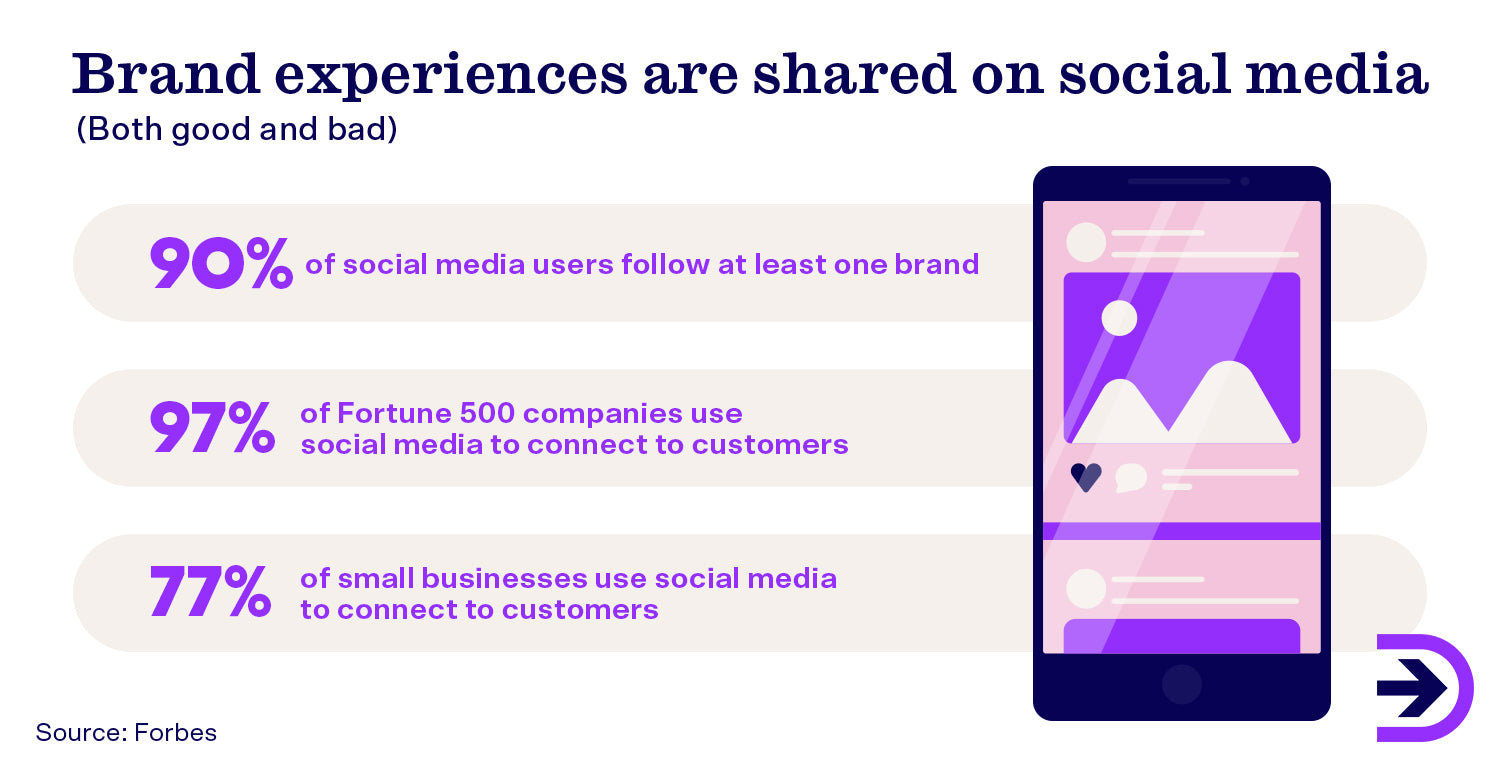
Social media isn’t the only place you can find customer feedback. Most consumer reviews are posted on just four websites: Google (73 per cent), Yelp (6 per cent), Facebook (3 per cent) and Tripadvisor (3 per cent).
When you receive reviews, feedback or testimonials, remember to listen to everyone. Each side will give you important insights into where you’re excelling and where you need improvement. Be sure to thank happy customers and let them know you appreciate them, and let unhappy customers know you’re thankful for the review, you’re taking their feedback seriously and you want to know how their experience could be improved.
Reviews & feedback
Perhaps you’re in the early days of your business, or you lack a strong online presence. In any case, there are many ways you can collect customer reviews and feedback.
Send out customer feedback surveys
Customer surveys are a simple way to collect feedback. They can measure various aspects of the consumer experience including customer satisfaction, engagement, and churn. You might choose to embed surveys into your website, send them via email or text, or include a survey in your product packaging. You could offer these surveys as part of a feedback collection campaign, or you might send them according to certain triggers: before leaving your website, as a post-purchase follow-up, or as an abandoned cart response. Keep your surveys concise: research shows customer surveys with one to three questions have an average completion rate of 83 per cent, compared to surveys with 15+ questions with a completion rate of 42 per cent.

Use interactive polls on social media
Polls allow followers to quickly answer a question from a set number of replies. They allow people to respond with minimum effort and they stand out on a social media feed, making it more likely for them to engage. You can poll customers to receive feedback, conduct market research, or even just provide entertainment. Does it matter whether your customers saw the blue or the gold dress? It doesn’t matter: what does matter is that you sparked a conversation, increased engagement, and got to the top of your customer’s feeds.
Have a clear contact form on your website
If a customer doesn’t know how to contact you, they’re not going to offer you feedback. If you don’t already have a Contact Us page on your ecommerce website, create one. If you do have a contact form, make sure you set clear expectations around response times. When you receive enquiries, try to personalise the response by using the person’s name, repeating their problem, and asking clarifying questions.
Create a focus group
Focus groups are gatherings of people that test and discuss your product or service. A focus group can have up to 10 participants and is used to collect qualitative research data. A good focus group is made of an accurate cross-section of your target audience and has specific research goals. For example, one focus group may revolve around your website’s design, while another might focus on site useability. Focus groups can provide you with valuable insights that may have been overlooked, and they allow you to build a one-on-one relationship with customers. However, they are time and labour-intensive.

Conduct customer interviews
Similar to focus groups, customer interviews allow you to directly interact with customers and allow them to share valuable feedback. Interviews usually allow for more speaking time with a single participant, leading to more detailed data collection. It also eliminates the risk of a group’s opinion colouring a single participant’s views. However, they will take more time and resources to organise, and the data may be more difficult to interpret.
Offer rewards and compensation
Humans love gifts. We will often go out of our way to get a free product, even if it costs us more money. Offering rewards to customers for providing a review can be a great way to increase engagement and gather thoughtful, detailed feedback. It can also help customers feel recognised and appreciated for their efforts. There are several different ways you can offer rewards in exchange for reviews:
-
Exclusive discount codes.
-
Free products on their next order.
-
Limited-time access to special products, services or events.
-
Referral programs with incentives for customers who spread the word about your business.
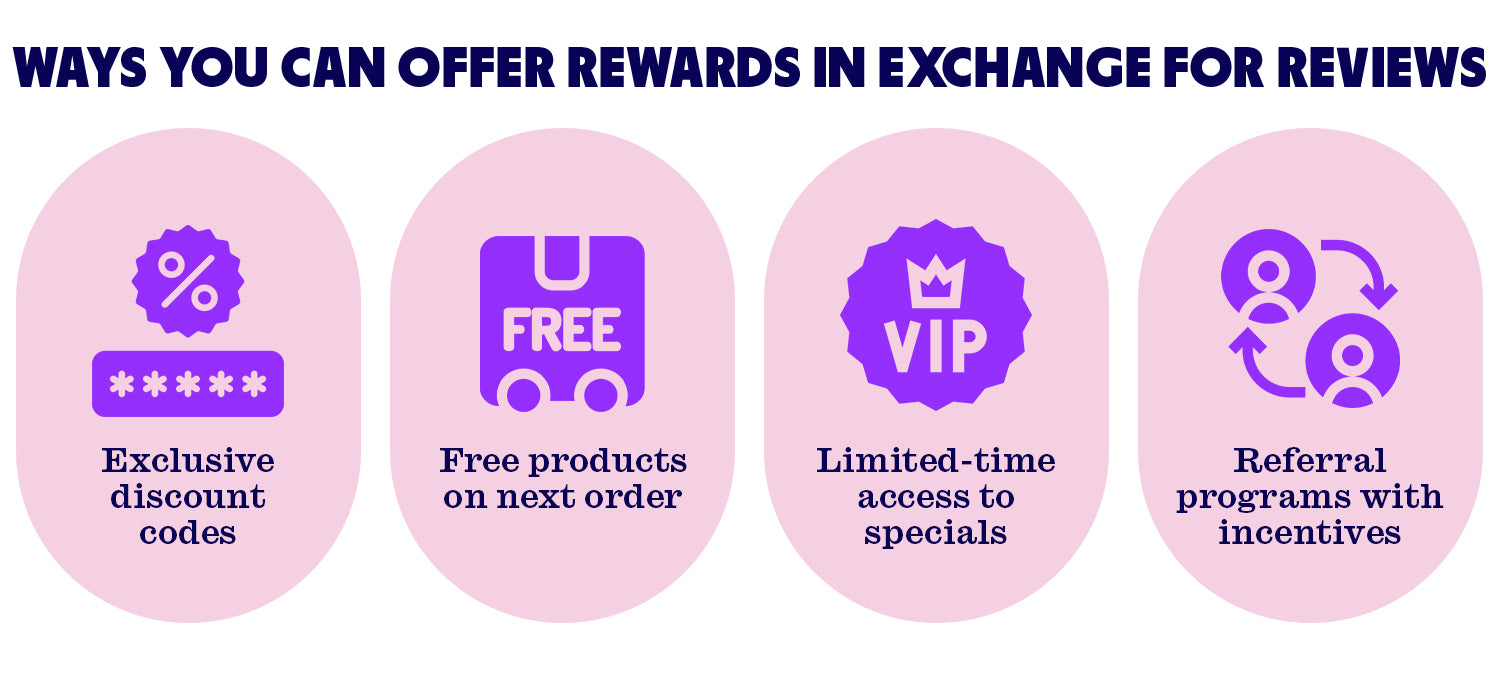
While rewards can lead to better reviews, businesses should be careful about their application. Not only does Google have strict policies regarding incentivised reviews, it is against the law for businesses to create or incentivise misleading reviews. There is also the risk that customers who receive a gift will only provide positive reviews and leave out any helpful criticism. You should be prepared to offer rewards regardless of the tone of the feedback. Before offering rewards for reviews, check your platform’s policies.
When it comes to focus groups and interviews, you are usually expected to offer monetary compensation. This can range from the standard minimum wage to hundreds of dollars depending on the time commitment, level of participant expertise (for example, if you’re conducting a B2B focus group centred on managers) and any additional activities they must complete (for example, filling out forms or providing additional data).
Website analytics
Seeing how customers interact with your website can provide you with valuable quantitative feedback on the user experience. Tools such as Google Analytics, PageSpeed Insights and Hotjar can show you which pages on your website get the most engagement, how long customers are spending on your pages, where they are looking on these pages, and where they may be hitting obstacles. By examining your site performance, you can improve useability and decrease customer frustration with slow loading times, broken links or other issues. Hotjar even allows you to view user sessions so you can identify pain points in real-time. Best of all, many of these tools are free to use.
Response times
Your response time matters. Customers expect a timely response to reviews posted online, with 51.7 per cent expecting businesses to respond to negative reviews within seven days of posting, and 48 per cent expecting a response within 24 hours. You’ll be rewarded for the effort - 71 per cent of customers aged 16-24 and 65 per cent aged 25-34 think a quick response would drastically improve the customer experience, while 54 per cent of customers have a favourable view of brands that respond to questions or complaints.
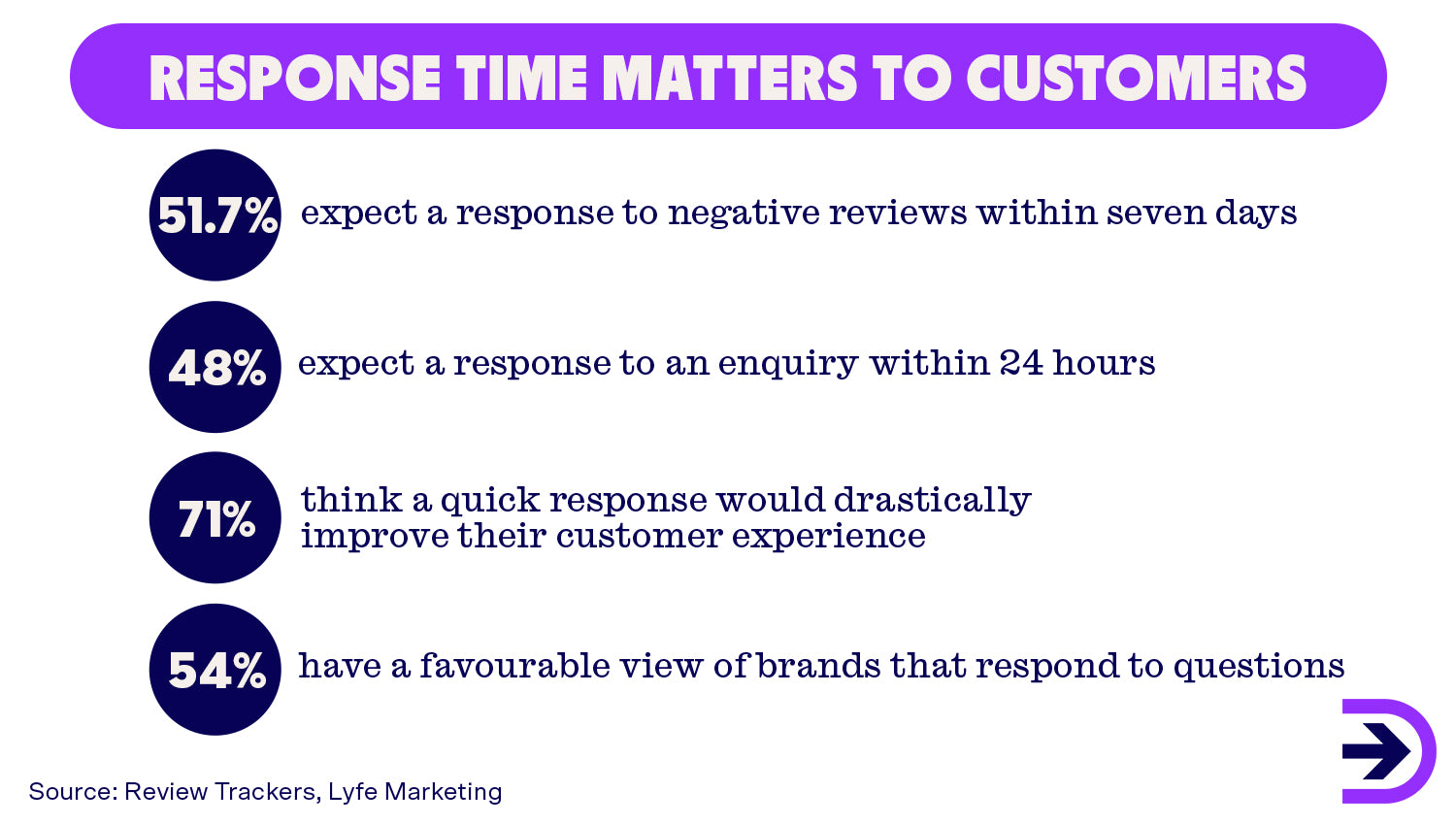
Accessible information
Technology has made it easier than ever to share information, and customer demands reflect this. Modern consumers place a high value on transparency and seek out brands that are open and honest about their business values and practices. They want to know how companies feel about issues that matter to them, where companies are sourcing their products, and what happens to those products along the supply chain. When it comes to your dropshipping store, it is especially important that you have clear and accessible shipping information and returns policies.
66 per cent of customers consider transparency about shipping fees as a crucial factor in their purchasing decisions. Research also shows that 32 per cent of customers abandon their carts when estimated shipping times are too long and 22 per cent leave if there is no guaranteed delivery date. Being transparent about shipping times and providing real-time tracking information goes a long way to building customer trust. Not only does tracking information ease customer anxiety, but it can also help you as a business solve logistics problems while packages are in transit, leading to fewer refund requests.
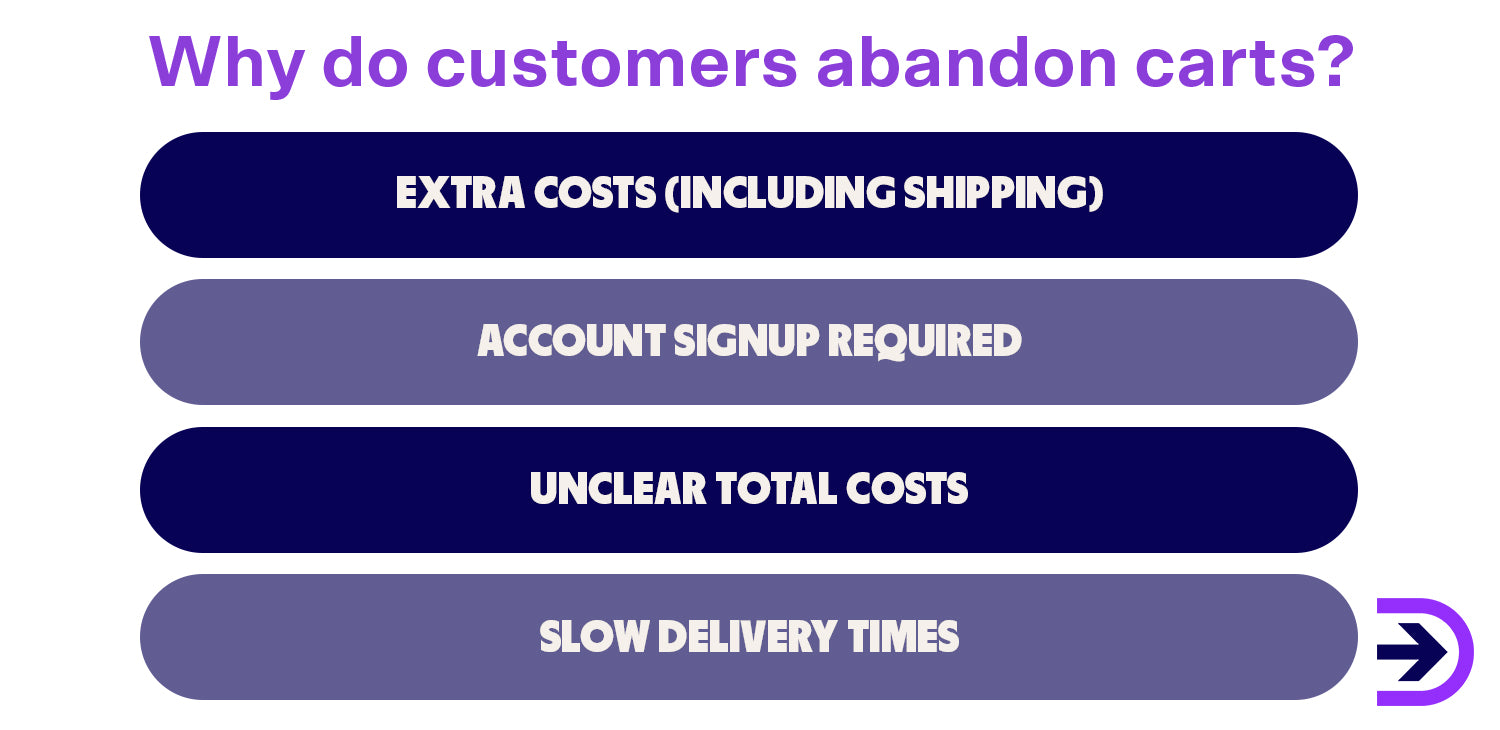
Regarding returns, over 60 per cent of customers will read a returns policy before purchase. Making your returns process clear and simple is an easy way to build trust, with 92 per cent of consumers willing to buy again from stores with easy returns policies. In a time when consumers are reluctant to spend their hard-earned money, this transparency assures them that if something goes wrong, you will be there to help them.
Digital tools to improve customer service
For ecommerce businesses dedicated to improving customer service, digital tools are essential. They can help your customer service team keep track of the customer experience and help larger businesses scale their operations. These tools allow you to automate busywork, track feedback, personalise customer interactions, and even predict your customer’s needs using AI.
Email automation
Despite the popularity of newer channels, email marketing remains one of the most effective strategies, with an average ROI of $36 per $1 spent. You can achieve even higher ROI through QA, A/B and spam testing, but this requires time and resources. Not so with email automation. Thanks to AI technology, businesses can now send personalised emails at scale throughout the entire sales funnel, from an automated greeting when they visit your website to after-sales support when they complete a purchase. Automation can take care of repetitive, mindless or low-impact tasks, but it can also help with market research and segmentation.
Popular email automation tools
Live chat & bots
Although 80 per cent of Australian customers still prefer talking to a real customer service representative on the phone when it comes to complex customer concerns, live chat is the second best option at 50 per cent preference. Chatbots are the least preferred method for complex enquiries, but they are excellent for lead generation, with the conversion rate of chatbots reaching up to 70 per cent. Chatbots also have speed on their side, with 69 per cent of consumers willing to use a virtual chat option for an instant response to their queries. Ideally, businesses should be leveraging both to provide a hassle-free and convenient customer service experience promptly. Chatbots can even be used to help upsell and cross-sell at checkout, raising your average order value.

Popular live chat & chatbot tools
Consider a CRM
Customer relationship management (CRM) software is designed to manage the relationship between a company and its existing or potential customers. It can help to provide a clear overview of your customers: their history with your company, what they like and dislike, what social media they use, and what they are saying about you and your competitors. It can also store information about your company that is relevant to consumers, automate your ticketing system, identify and prioritise leads, and generate valuable insights. CRM gives you easier access to customer data across multiple devices. A robust CRM system will link every part of your business, from sales through to IT. With the right CRM, you can boost sales by up to 29 per cent, productivity by 34 per cent, and forecast accuracy by 42 per cent.
Popular CRM tools
Why Does This Matter?
Customers are more likely than ever to switch brands that don’t meet their expectations. By providing fast, personalised and positive customer service, you’ll foster a positive brand image and develop a professional reputation. This will help your brand stand out from the competition more than your product range or pricing will. One in four customers are willing to spend up to 10 per cent more if they know they’ll receive excellent customer service. There are practically no downsides to providing quality customer service, especially with the help of automation for mundane tasks.
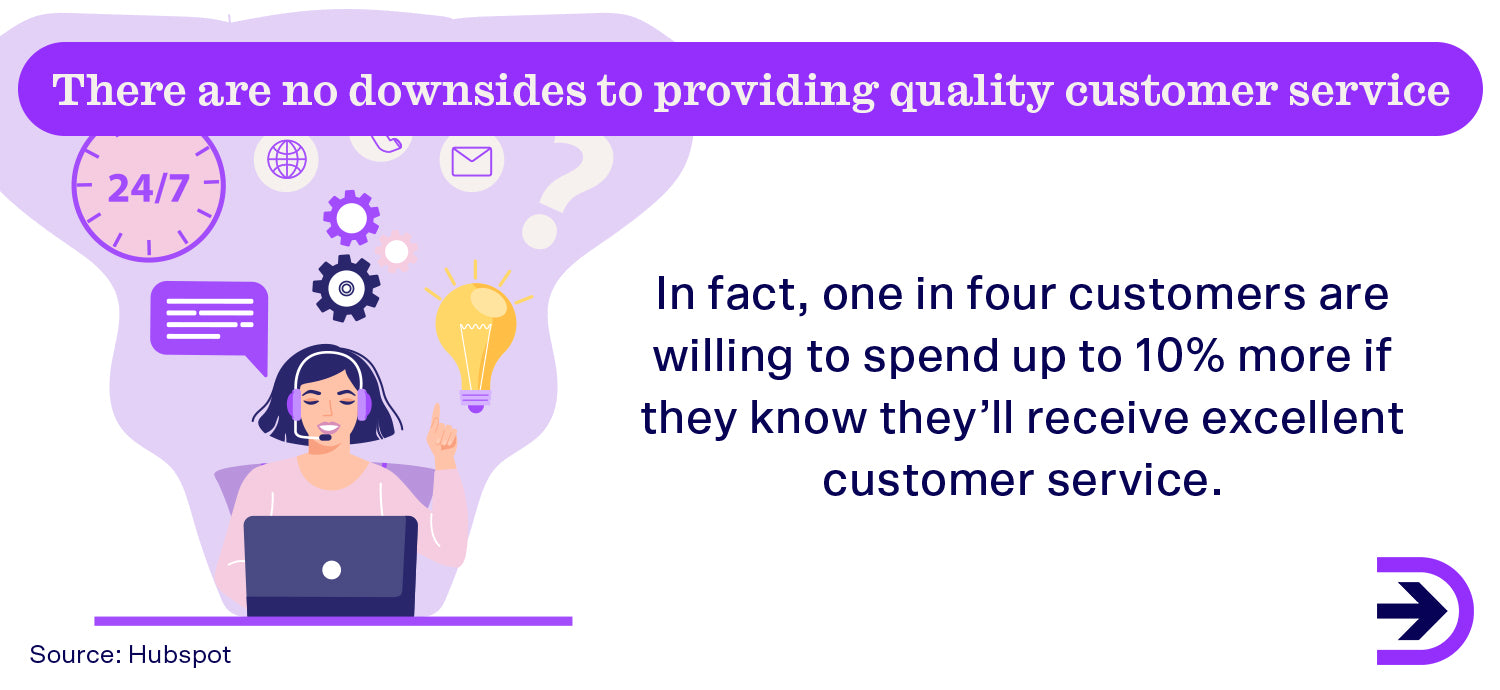
Deliver great customer service with Dropshipzone
Dropshipzone was developed for entrepreneurs, by entrepreneurs, so we know a few things about customer service. That’s why we have dedicated account managers and Australia-based customer service representatives available 24/7. Unlike other dropshipping marketplaces, our suppliers are 100 per cent locally sourced to ensure quick delivery and hassle-free support. We have thousands of quality SKUs from hundreds of suppliers that you can add to your store at the click of a button. With no hidden fees, no minimum order quantities, no inventory costs and competitive pricing, you can invest in growing your business. Get started today and make ship happen with Dropshipzone.









